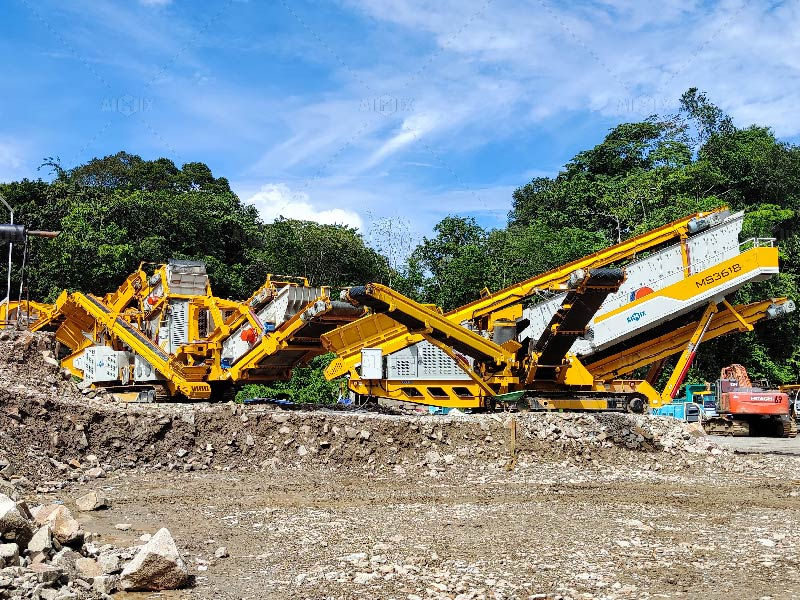The Core Functions of a Stone Crusher Plant: What You Should Know
- info515452
- 2024年11月19日
- 讀畢需時 4 分鐘
A stone crusher plant is essential in transforming large stones and rocks into smaller, usable aggregates or fine materials required for various construction and infrastructure projects. These plants are designed to process raw materials efficiently, turning them into valuable building components such as road base, concrete, or fine sand. This article delves deeper into the primary functions of a stone crusher plant, its critical components, and how it supports modern construction industries.
What is a Stone Crusher Plant?
A stone crusher plant(planta trituradora piedra) is a complete production system that processes raw rocks or stones into specific sizes and grades. These materials are essential for various construction applications, including roadwork, building foundations, and decorative landscaping. Its purpose is to make raw stone manageable and to meet the precise material specifications required for different projects.

Core Functions of a Stone Crusher Plant
1. Breaking Down Large Rocks into Usable Sizes
The main function of a stone crusher plant is to reduce raw stones into smaller(reducir las piedras crudas en piezas más pequeñas), manageable pieces. The process is carried out in multiple stages:
Primary Crushing: This is the first stage where large rocks are fed into a jaw crusher or similar equipment. The primary crusher breaks down the rocks into chunks of a manageable size for further processing.
Secondary Crushing: Medium-sized rocks from the primary crusher are further reduced using cone or impact crushers.
Tertiary Crushing: The final stage focuses on producing fine materials such as sand or very small gravel, ideal for specific construction purposes like concrete mixes or asphalt production.
This staged breakdown ensures that the output meets specific size and shape requirements.
2. Sorting and Screening of Materials
After crushing, the materials pass through vibrating screens that classify them by size. This step is crucial to ensure the right material is sent to the appropriate storage or processing area. For example:
Larger stones are recycled for additional crushing.
Graded materials are segregated for specific uses such as road base or decorative stones.
This meticulous screening improves material quality and minimizes waste.
3. Transporting Materials Within the Plant
Conveyors play a vital role in the stone crusher plant, transporting materials from one stage to the next.
They ensure seamless movement between the crushing, screening, and sorting processes.
Conveyor systems reduce the need for manual handling, improving operational efficiency and safety.
4. Managing Dust and Environmental Impact
A modern stone crusher plant incorporates dust suppression systems to control emissions during operation. This is essential to:
Comply with environmental regulations.
Minimize air pollution near the site.
Maintain a clean and safe working environment.
Water spraying systems or advanced filters are commonly used to achieve this goal.
Components of a Stone Crusher Plant
Crushers
Jaw Crusher: Performs the primary crushing of hard and large stones.
Cone Crusher: Handles secondary and sometimes tertiary crushing for finer material production.
Impact Crusher: Suitable for softer materials and creates well-shaped aggregate for construction.
Screens
Vibrating screens separate materials based on size. These components are adjustable, enabling the plant to meet diverse project requirements.
Feeders
Feeders regulate the flow of materials into the crushers. They ensure that crushers are not overloaded, which would lead to inefficiencies or equipment damage.
Conveyor Belts
These belts ensure smooth and continuous movement of materials between crushers, screens, and storage.
Dust Suppression Systems
These systems, often consisting of water sprays or fabric filters, prevent dust particles from escaping into the environment.
Benefits of a Stone Crusher Plant
Efficient Material Processing
By streamlining the crushing, sorting, and transportation processes, a stone crusher plant reduces manual labor and processing time, enabling faster project completion.
Cost-Effective Solutions
Stone crusher plants eliminate the need for transporting raw materials to off-site processing facilities, reducing logistics costs.
High Output Quality
The systematic crushing and screening processes ensure materials meet precise quality standards, enhancing the durability of roads, buildings, and other structures.
Sustainability
Modern plants are designed with eco-friendly features like energy-efficient motors and dust suppression systems, promoting sustainable construction practices.
Applications of Stone Crusher Plants
Road Construction
Stone crusher plants produce aggregates for asphalt, road bases, and drainage layers essential for building durable roads.
Building Foundations
Crushed stones are used in concrete mixes for strong building foundations.
Landscaping and Decorative Applications
Graded stones and fine sand are popular for decorative pathways, gardens, and retaining walls.
Best Practices for Efficient Operation
To maintain efficiency and longevity, a stone crusher plant requires proper maintenance and operation:
Regular Maintenance Checks
Inspect critical components like crushers, screens, and belts for wear and tear.
Replace damaged parts promptly to avoid costly downtime.
Dust Management
Ensure that dust suppression systems are functioning optimally. Clean and service these systems regularly.
Operator Training
Trained personnel can operate the plant efficiently, reducing waste and maximizing output.
Conclusion
A stone crusher plant is much more than just a collection of equipment; it is the backbone of material production in the construction industry. By breaking down raw materials, sorting them accurately, and delivering them efficiently, these plants ensure that infrastructure projects meet quality and time requirements. Whether for road construction, building foundations, or decorative landscaping, stone crusher plants provide unmatched versatility and efficiency.
With proper operation and maintenance, a stone crusher plant can be a long-term, cost-effective solution to meet the growing demand for construction materials.






留言